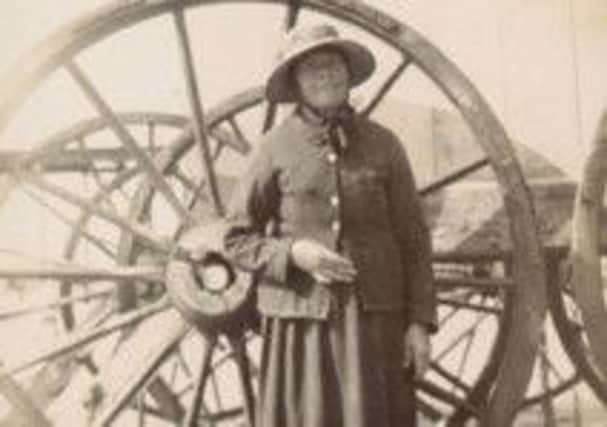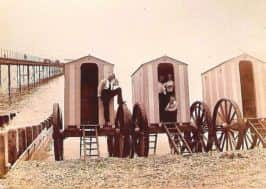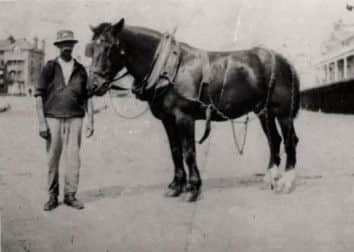Nostalgia: The changing face of our seafronts


Scarborough was the first seaside resort to have the bathing machines for general use in 1735.
King George III used a bathing machine in Weymouth during 1789 and Queen Victoria had her own machine, at Osborne House on the Isle of Wight. Both of these bathing machines are on display in their respective museums.
Advertisement
Hide AdAdvertisement
Hide AdWhile we may believe that bathing machines were of one particular design, it is true they were all wooden constructions, with steps, small windows and were pulled into the water by a horse.


However there were in fact many different designs, ranging from those for royalty to the basic machines which were to be seen on the majority of beaches.
Some of the early reports talk of the bathing machines being toys of the rich with the ‘less-well off continuing to bathe naked on unfashionable parts of the beach’.
When I first became interested in bathing machines, I searched the internet to see if ‘these contraptions’, as they were known, existed anywhere else in the world.
Advertisement
Hide AdAdvertisement
Hide AdI was surprised to find pictures and descriptions from as far afield as Australia, Uruguay, Ostend and Southern Ireland. Ostend to Australia. Some of the continental machines were quite ornate and some even had a member of staff standing outside the door.


As far as the Australian machines are concerned, I have not as yet found any link with the UK, but feel it may have been a traveller from this country who arrived on a beach and found no such machine in which they could change into their swimming costumes and decided to introduce them to Australia.
However many of the pictures from Australia show an additional item, that of a small fence around the front of the machines. This was apparently known as a ‘shark guard!’ I must be honest; I would not wish to swim in shark-invested waters, with or without a guard.
Returning to Bognor, the town was lucky to have two proprietors of these machines on our seafront, Mary Wheatland and Frederick Jenkins.
Advertisement
Hide AdAdvertisement
Hide AdMany people are aware of Mary Wheatland who was born in 1835 in Aldingbourne and moved to Bognor and eventually married in 1857.
However this week we will concentrate on Frederick Jenkins, who operated from the west side of the pier. In 1886 when Frederick W Jenkins married Margaret, he and his new wife decided to move to the growing seaside resort of Bognor, from Eastbourne where her builder father also operated bathing machines.
Her father John gave them a fleet of bathing machines as a wedding present and as Margaret’s favourite colour was blue, the Bognor bathing machines were painted in blue and white stripes.
Frederick built his own bathing machines at his yard in Longford Road from April 1905. Thus 100 years ago, bathing machines were being constructed in the town to be used by thousands of holiday-makers.
Advertisement
Hide AdAdvertisement
Hide AdFrederick also had machines at the end of West Street, and a third site at the east end of the parade, opposite Clarence Road.
During the winter months his machines were stored in a field at Shripney and would be repainted in their familiar blue and white stripes for the summer months, while also carrying out other necessary repairs.
The shire horses used by Frederick were named Major, Beauty and Lion and they were stabled in Longford Road.
The ticket office beside the pier would open for the summer season from June 1 each year.
Advertisement
Hide AdAdvertisement
Hide AdOn each site there was a wooden ticket office where you could obtain towels and bathing costumes imprinted with JENKINS, which could be hired for a few pence.
These were rolled together, and stacked on the shelves of the ticket office, looking like rows of Swiss rolls. In the early days they were washed after use in the sea water and dried on the shingle.
Later they were taken back to the builder’s yard where they were washed, put through a big outdoor mangle and hung on lines to dry. How health and safety would enjoy these procedures today!
While researching bathing machines when on holiday in Belgium, I was very surprised to find their 100-cent banknote contained a sketch of a bathing machine (prior to the change to euros).
Advertisement
Hide AdAdvertisement
Hide AdThis was part of a new series of banknotes in the 1990s. This particular note was to pay tribute to James Ensor, an Ostend painter, at the turn of the last century. Of course with the introduction of the euro, this note was now destined for museums.
Bathing machines are also used by the Bognor Local History Society as their advertising logo, which can be found on badges and some of the other souvenirs that are on sale in their museum, which has free entry and is in West Street and more details can be found on their website http://www.bognormuseum.org/
Returning to the bathing machines of Frederick Jenkins, over the years these machine were severely damaged by the constant buffeting of the waves.
In 1923 the big machines were replaced by huts which looked like sentryboxes, at the back of the beach, and the original bathing machines were broken up, with the exception of one, which was retained by the family.
Advertisement
Hide AdAdvertisement
Hide AdThis bathing machine still exists. However during an earlier period of restoration in 1978, this machine, No 23, was found to have the signature of Fred Jenkins’ which stated – ‘April 5th, 1905, FW Jenkins’.
I hope therefore that eventually, at the museum, we will all be able to view again and experience the shape and size of these wonderful historic ‘bathing contraptions.’
When that occurs remember the machine is dated April 5, 1905, giving us a real piece of Bognor history that is tangible and because of the care of the family, will be available for us and future generations to view to help us understand a bygone age.